From “Open” to Owned: How Attackers Weaponize Leaky Cloud Storage
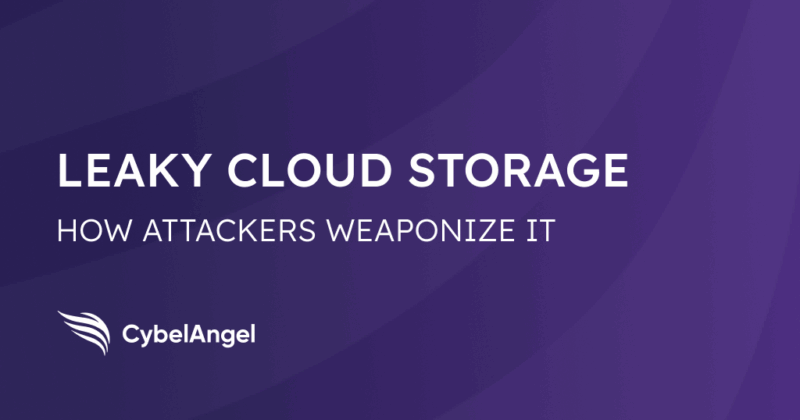
Table of contents
A single misconfigured cloud asset can undo years of careful security work. One bucket left open, or one test environment forgotten, and suddenly sensitive data is exposed to the public internet. These exposures remain one of the most common (and costly) drivers of cloud breaches.
But it doesn’t end with a headline about a “leaky bucket.” Once discovered, an S3 bucket exploit is quickly tested, indexed, and drained by automated data exfiltration tools. And anyone can do it. With the right script, an open bucket becomes a doorway, and the data inside can be copied and weaponized in minutes.
The scale of cloud misconfigurations
Cloud storage leaks are routine, with high scalability. Researchers continue to uncover exposed Amazon S3 buckets, Azure Blob containers, and Google Cloud Storage buckets holding everything from customer records to source code.
In one case, a misconfigured Amazon S3 bucket left more than 8TB of meeting recordings and transcripts exposed to the internet.
But why does this happen?
Many teams are running multi-cloud environments that mix AWS, Microsoft Azure, and Google Cloud. Add hybrid cloud models that blend public cloud with on-premises data centers, and it’s easy to lose track of who owns what.
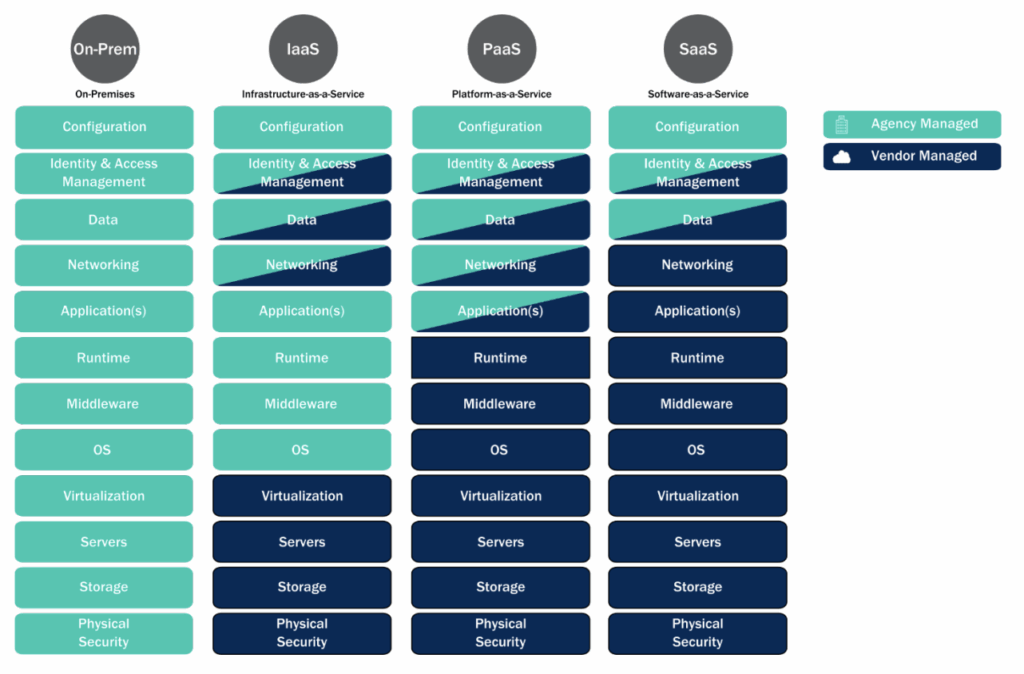
Plus, weak or overly broad access control policies make it worse. Lifecycle management is often neglected, leaving test buckets or retired workloads online long after they’ve become outdated.
Unfortunately, every leaky S3 bucket is a:
- Potential compliance violation
- Source of sensitive data for attackers
- Gateway to a larger cloud data breach
Let’s unpack how threat actors can weaponize cloud infrastructure in the first place.
How attackers discover exposed assets
Attackers have a range of tools and automations to catch exposed cloud resources. Here are some of the main asset types that cybercriminals take advantage of to exploit security risks.
1. Open-source GitHub tools
GitHub hacking tools like S3Scanner scan for open buckets across multiple cloud providers (AWS, GCP, DigitalOcean, Linode, etc.), checking common permission misconfigurations.
BucketLoot is another. It inspects S3-compatible buckets, flags secret exposures using regular expressions, and can work in “guest mode” (no credentials) for public buckets, or with credentials for deeper scans.
Slurp does bucket enumeration using domain names, keywords, permutations. It tries to find bucket names exploitable via black-box scanning.
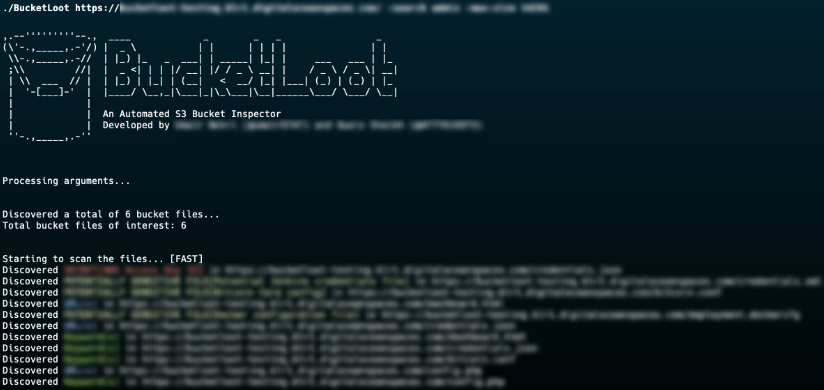
2. Search engines and indexing services
GrayhatWarfare is a website that indexes publicly accessible S3 buckets, lets users search by filename, keyword, or extension. It reveals open buckets and exposed files.
These services often have free and paid tiers, with premium access sometimes offering more detailed search filters, or more recent entries.
For example, GrayhatWarfare’s premium tier costs around $25 a month. That’s pocket change compared to the millions a breach can cost a business, yet it gives attackers unlimited search power over exposed files.
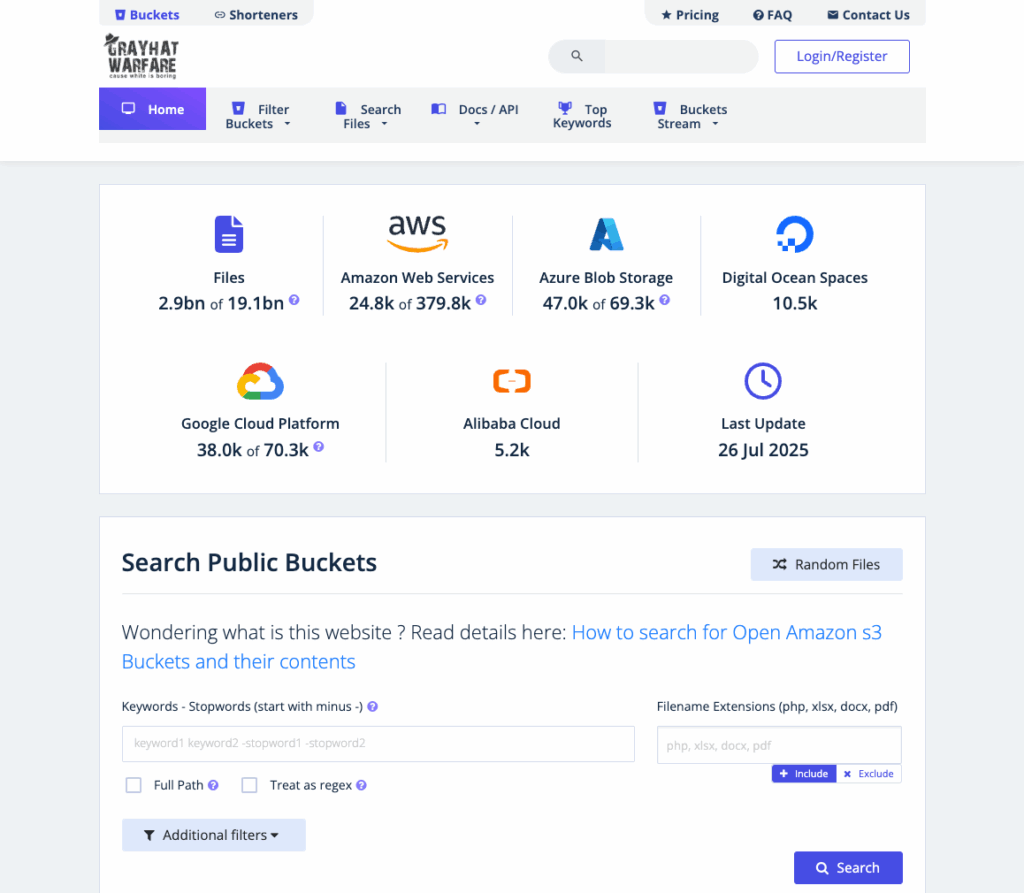
3. IP range-based scanning & endpoint detection
Some scripts and tools map the publicly published IP ranges for cloud providers.
They can then scan those ranges (via HTTP/HTTPS or provider APIs) to detect object storage endpoints or bucket URLs. If a bucket responds (e.g. with HTTP 200 on listing, or metadata), it’s flagged.
Tools like ip2cloud help identify if a given IP belongs to AWS, Azure, etc., which can narrow the scanning targets.
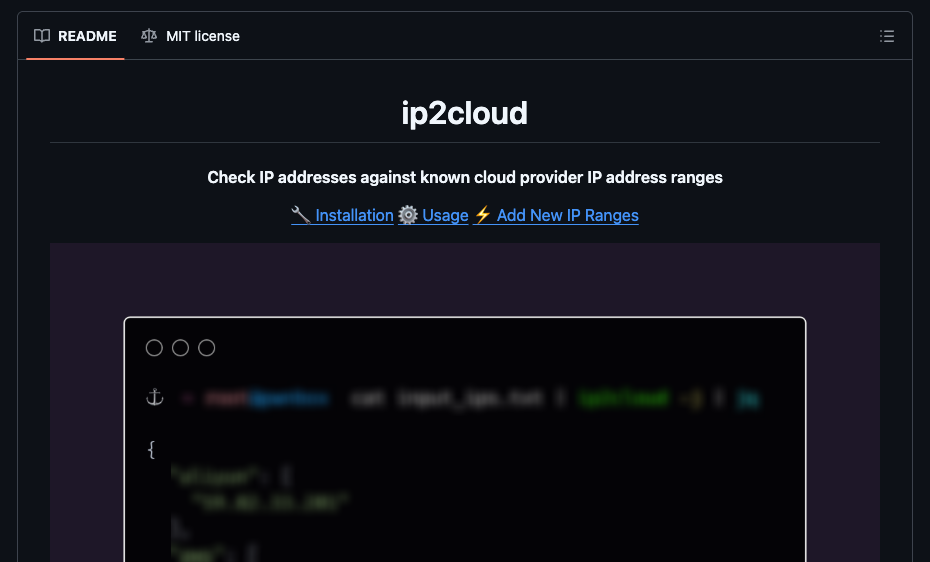
4. Filename brute forcing/ directory guessing
Even if a bucket is “closed”, with no public listing, attackers can often brute force common file names or container names (e.g. index.html, backup.zip, credentials.json) or guess container names in Azure Blob or Google Cloud Storage.
For example, GrayhatWarfare’s “Buckets Stream” addon documents that about 10% of private buckets have an exposed index.html which can act as a breadcrumb to discover more.
⚠️ Disclaimer: Tools and services like GrayhatWarfare are referenced here for educational purposes only. They should be used by security teams to verify their own vulnerabilities, not to access or download third-party data.
Cloud attack techniques
Once an exposed bucket or blob is found, attackers bring out scripts designed to pull as much data as possible, as quickly as possible.
The tools aren’t necessarily cutting-edge, either. Many are open-source, freely available on GitHub, and rely on the same cloud provider APIs your own teams use every day.
Some scripts are built for enumeration. Using AWS CLI or Azure SDKs, they probe a bucket, confirm whether it’s public, and list every file it contains.
Others are tuned for recursive downloading, pulling down entire folder structures in one sweep. A single command can clone thousands of files.
Then come the keyword searchers. These look through filenames and metadata for high-value targets, such as:
- Credentials
- Financial records
- Software licenses
- Anything tagged “confidential”
This automates what would otherwise be a painstaking manual process.
Here’s an example of what this flow could look like in action.
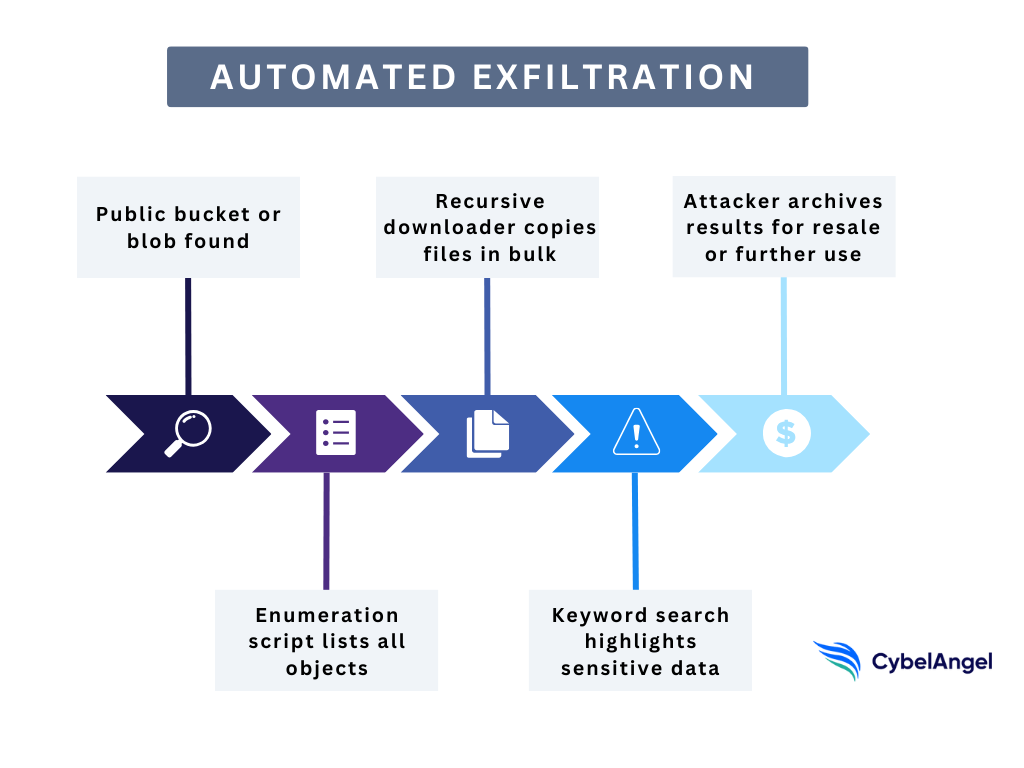
Case studies and use cases
Let’s look at some real-world breaches (some ongoing) where simple misconfigurations in cloud services caused some big damage.
- July 2025: Researchers found that nearly half of all AWS S3 buckets are potentially misconfigured. Many of those are publicly accessible, exposing sensitive data simply because of default or lax settings.
- December 2024: An open S3 bucket was discovered, and even worse, it was being used like a shared network drive. It contained customer data, keys and secrets. Attackers were able to access all of this because access controls weren’t properly enforced.
- July 2019: Medico Inc., a healthcare vendor, exposed nearly 14,000 files via a misconfigured S3 bucket. The contents included medical, financial, and legal records, lots of personally identifiable information (PII).
Defensive measures for security teams
Of course, misconfigurations will always happen. But they don’t have to be inevitable breaches, if security teams stay on top of them. The key to good cloud asset management is to focus on prevention, detection, and rapid response.
Let’s break these three steps down.
- Prevention: Start with Cloud Security Posture Management (CSPM) to enforce baseline policies across AWS, Azure, and Google Cloud. Combine CSPM with continuous asset discovery and IT asset management (ITAM) integration so that buckets, blobs, and test environments aren’t forgotten once deployed. Good lifecycle management reduces the “shadow IT” problem that so often creates exposures.
- Detection: Implement continuous monitoring of cloud environments and real-time alerts for policy violations. Simple guardrails (such as flagging any storage container marked “public”) can buy critical time before data is indexed and exploited. External monitoring is also vital, as exposures often appear outside of your internal dashboards first.
- Responsive: When exposures are found, you need clear incident response workflows. That includes revoking exposed keys, locking down storage permissions, and in some cases, executing automated takedown of misconfigured endpoints. Speed matters. The longer a bucket stays exposed, the more likely it is to be scanned and siphoned.
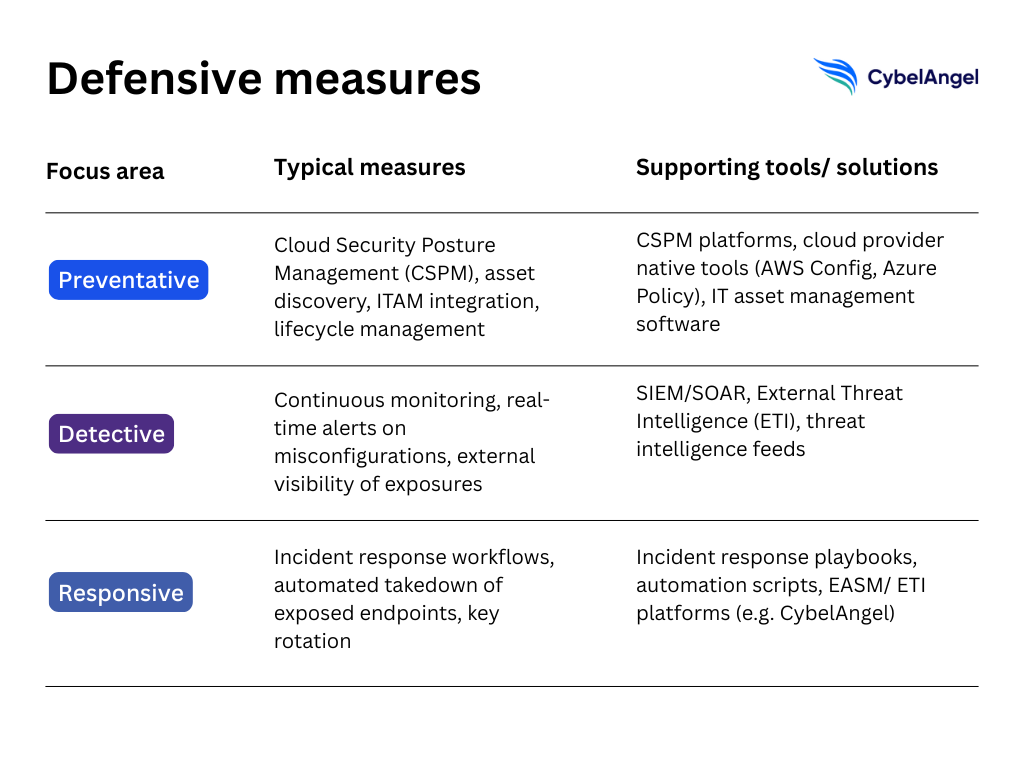
If you’re looking for more cloud risk management resources, the CISA and NSA have jointly published cloud security guidance. It stresses the importance of sound identity, access, and asset management to avoid these exact scenarios. Their recommendations align closely with what many CISOs are already prioritizing, including visibility, least-privilege access control, and continuous verification.
CybelAngel adds another layer. By monitoring externally and detecting misconfigurations from the outside in, CybelAngel helps teams find cloud computing exposures before they are weaponized.
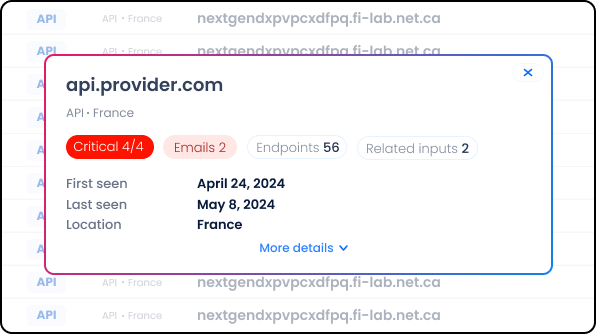
FAQs
What happens when an S3 bucket is publicly exposed?
Anyone with the bucket’s URL can list and download its contents using standard AWS APIs. If indexing services or automated tools detect it, the data may be copied within minutes and shared on public forums.
What tools do hackers use to find leaky cloud storage?
Attackers use open-source scripts like S3Scanner or Slurp, as well as search engines such as GrayhatWarfare and Shodan, to locate exposed buckets and files. These tools can automate scanning and file discovery at scale.
How do attackers exfiltrate data from the cloud?
Once a bucket or blob is confirmed open, attackers run recursive download scripts or use SDK commands (AWS CLI, Azure Storage Explorer, Google gsutil) to copy entire directories. Some scripts also scan for keywords like “password” or “confidential” to prioritize high-value data.
What are the most common cloud security misconfigurations?
The most frequent mistakes are:
- Granting public read/write access to storage
- Leaving test environments online
- Failing to rotate credentials
- Having weak or missing access management policies across multi-cloud environments
How can you prevent cloud data leaks?
Use Cloud Security Posture Management (CSPM) to enforce secure defaults, monitor cloud resources in real time, and integrate asset discovery into IT asset management. Regular audits, automated alerts, and external exposure monitoring also reduce the chance of unnoticed leaks.
What is Cloud Security Posture Management (CSPM)?
CSPM is a category of security tools that continuously check cloud environments for misconfigurations, compliance issues, and risky permissions. It helps teams maintain and streamline visibility across AWS, Azure, Google Cloud, and hybrid setups, reducing the attack surface.
Conclusion
Misconfigured cloud ecosystems are a fast track to data theft. Security teams need real-time monitoring, a complete cloud asset inventory, and streamlined workflows that optimize functions across multi-cloud environments.
Done right, these measures deliver stronger protection, regulatory alignment, and tangible cost savings. CybelAngel helps make that possible by detecting and remediating exposures before attackers exploit them.

